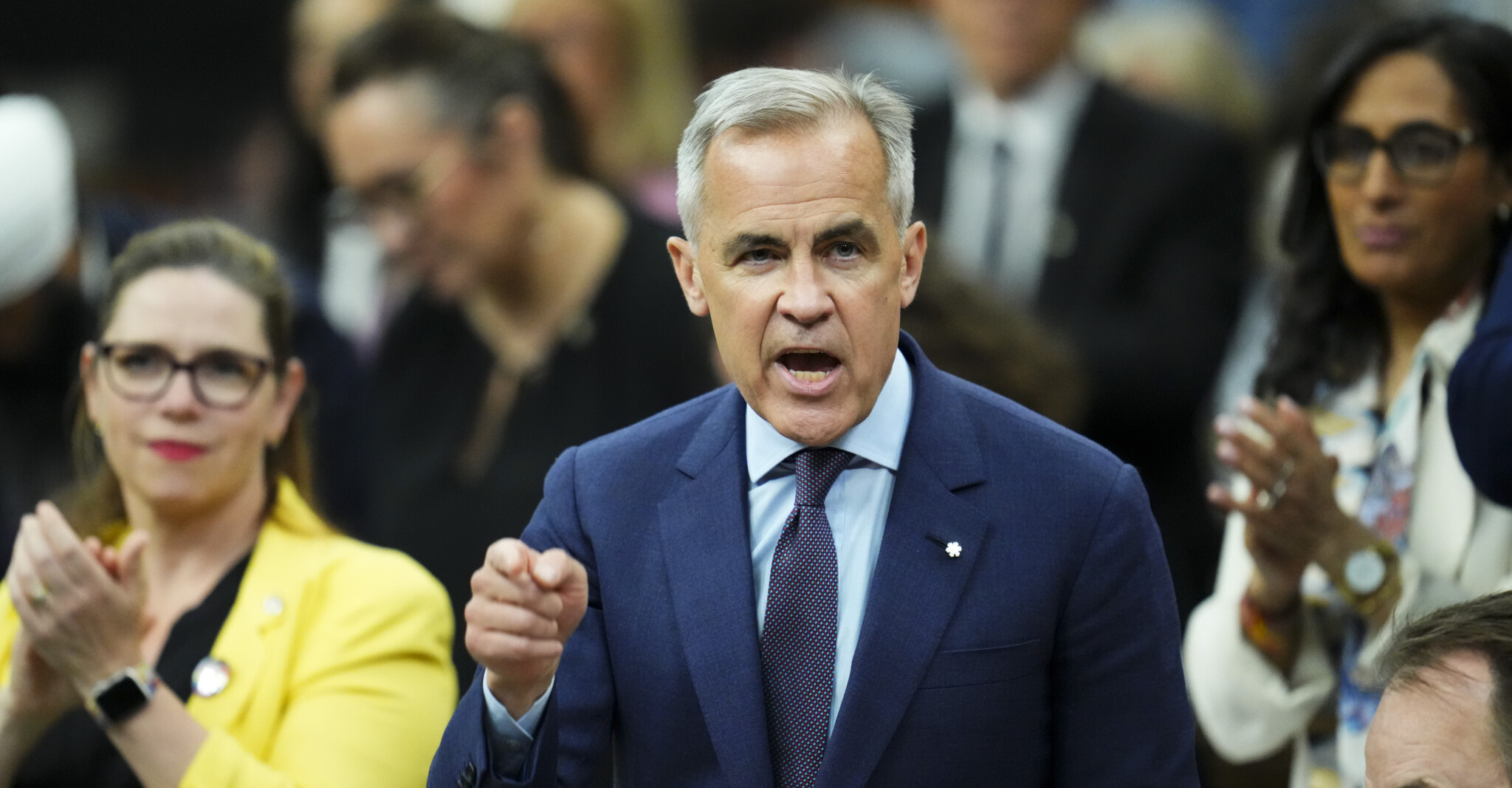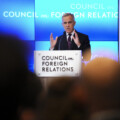In The Weekly Wrap, Sean Speer, our editor-at-large, analyses for Hub subscribers the big stories shaping politics, policy, and the economy in the week that was.
The Digital Services Tax is not worth all this trouble
In light of Donald Trump’s social media announcement that he’s ending trade negotiations with Canada over the federal government’s stubborn insistence on its Digital Services Tax (DST), we must remember that the DST isn’t just bad because it has provoked the president and threatened our trading relationship with the United States. It’s bad policy on its own terms.
Before the prime ministership of Justin Trudeau, successive Canadian governments had a hands-off internet policy. The results have been extraordinary. It has led to an explosion of content, democratized whose stories and what stories are told, lowered the barrier to entry for Canadian entrepreneurs and small businesses, and generated tremendous innovation that’s improved education, health care, and other parts of Canadian society.
This four-decades-long experiment with an open internet has been a major policy success—in fact, I’d argue that the Chretien government’s initial decision in favour of a de-regulated internet may be the most enlightened in more than 30 years.
Yet the Trudeau and now Carney governments have adopted the completely opposite view. They assume that these technology companies are exploitative and harmful. That the internet is anarchistic and dangerous. That the state must coordinate, manage, and shape what Canadians buy, make, see, and sell online.
They’re not satisfied, in other words, with micromanaging the physical economy. They insist on now doing the same to the online economy.
The DST must therefore be understood as part of a broader suite of policies—including the Online Streaming Act and the Online News Act—designed to re-regulate the internet. These laws and policies represent an unprecedented expansion of state power to a hitherto unregulated part of the economy.
The consequences are predictable. Although the DST is slated to generate less than $1 billion in annual revenues, the true costs will be far greater. The government’s policies will mean less freedom and choice on the internet. Entrepreneurs and content creators will find it harder to sell their products online. Consumers’ preferences will be subordinated to the diktats of the government. And the tax burden will invariably be passed on to all of us.
Now we know that DST may even undermine our ability to secure a trade agreement with the U.S. It’s one thing to give up tariff-free access to the American market in the name of protecting our interests or principles. It’s another to throw it away for manifestly bad policy.
The Carney government should abandon its internet regulation agenda, including the DST, because, first and foremost, it is bad for Canadians. That it is bad for Canada-U.S. relations and the future of a bilateral trade agreement is only a secondary reason.
Immigration is the next big issue in Canadian politics—Pierre Poilievre is counting on it
This week may prove to be a turning point in the politics of Canadian immigration policy.
It began with Conservative Party leader Pierre Poilievre’s first sit-down interview since the election—an exclusive with The Hub—in which he argued that the government needs to set its immigration policy such that Canada experiences a net population decline in the short term in order to rebalance housing, labour markets, and social services.
It was a major pronouncement—the furthest he’s gone toward immigration restrictionism as party leader. Poilievre’s rationale was technocratic rather than a cultural or social critique of high levels of immigration. But it nonetheless signals a notable shift from his historically liberal stance on immigration.
Then Bloomberg published a story that reflects what a lot of young Canadians and their parents already knew. It reported that youth unemployment in Canada has risen by 3.6 percentage points over the past two years to now more than 13 percent, representing the steepest climb among major OECD economies. The government’s post-pandemic immigration surge is, of course, a big part of the story. The influx of low-skilled immigration has disproportionately affected lower-wage and entry-level sectors where young people tend to start their careers.
This was followed by a curious report in the National Post about Ottawa’s decision to set a new benchmark: immigrants or permanent residents should constitute at least 25 percent of the national labour force. That’s an unusual and ideologically driven way to think about immigration. Labour markets should reflect the population—not be engineered by it.
All of this raises questions about Poilievre’s timing. While it’s true that Trudeau and Carney governments have begun to walk back their unsustainable immigration policies, the effects of their past recklessness are still playing out in the housing and job markets. And the new details about their 25 percent labour target show that the underlying ideology hasn’t quite gone away.
In the past, Poilievre’s position may have been too risky. It was likely to buck up against Canada’s pro-immigration narrative. That’s much less clear today. Polling tells us that Canadians are far more skeptical of immigration than even five years ago. Poilievre’s position is now probably closer to popular opinion.
There’s an interesting analogy to the politics of inflation. Poilievre came to lead in the polls in 2024 by getting out ahead of the inflation issue. It was a powerful political issue because even as inflation growth subsided (and the Trudeau government declared victory), its effects lagged for Canadian households.
One gets the sense that he’s betting on a similar dynamic here. The Carney government is desperate to declare that the immigration problem is over. Yet Canadians are still feeling its aftereffects. Poilievre is counting on it.

Prime Minister Mark Carney walks Chief of the Defence Staff, General Jennie Carignan and Minister of National Defence David McGuinty, right, as he prepares to make an announcement at Fort York Armoury in Toronto, June 9, 2025. Chris Young/The Canadian Press.
Ottawa should focus on its actual responsibilities—chiefly, defence spending
Former Clerk of the Privy Council Michael Wernick has identified a genuine fiscal problem. In a recent Financial Post op-ed, he asks: how can the federal government boost defence spending to meet its NATO obligations, preserve federal transfers and entitlement programs, maintain low taxes, and avoid spiraling deficits? It’s what one might call a fiscal quad-lemma. We can pick three of those goals. Not all four.
Wernick’s solution—raising the federal GST by two points and earmarking the new revenues as a “Defence and Security Tax”—amounts to choosing option four: increase defence spending, preserve federal programs, raise taxes, and avoid higher deficits.
He deserves credit for putting forward a tangible answer. But I disagree with his proposed approach.
Defence isn’t a discretionary program or a boutique policy priority. It’s one of the most essential and constitutionally grounded roles of the federal government. Section 91 of the Constitution Act is crystal clear. Ottawa is responsible for national defence. That obligation doesn’t come after everything else. It comes first.
If anything, we ought to reverse Wernick’s logic. The first dollar flowing into federal coffers should go to the Canadian Armed Forces. Only then should we debate how remaining revenues get spent.
Instead, Wernick’s proposal would institutionalize the idea that federal resources are primarily for redistributive programs and cost-sharing provincial entitlements. Defence would be tacked on through a dedicated tax, as if it were somehow an extra or optional responsibility. That’s an inversion of Canada’s constitutional order.
A better path would be to test defence spending against the rest of Ottawa’s expansive spending ambitions. What is more essential to the federal role: defence or dental care? Defence or daycare? Defence or pharmacare? If we’re honest about constitutional roles and responsibilities, the answers are obvious.
The Trudeau government’s unprecedented expansion of the federal spending power had a lot of problems. But a big one is that it has dedicated scarce resources away from what Ottawa should actually be doing. Restoring the federal government to its core constitutional responsibilities would go a long way in solving the fiscal quad-lemma.









